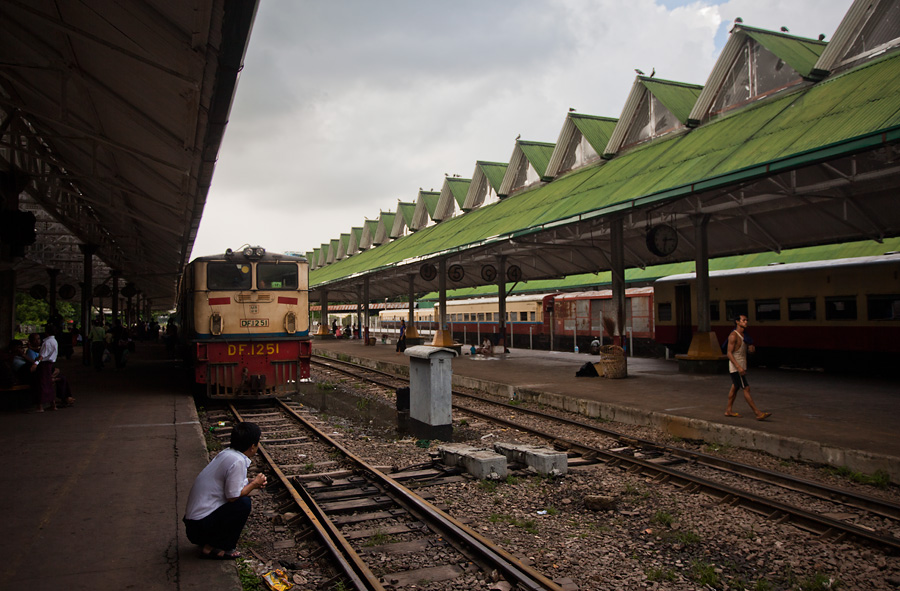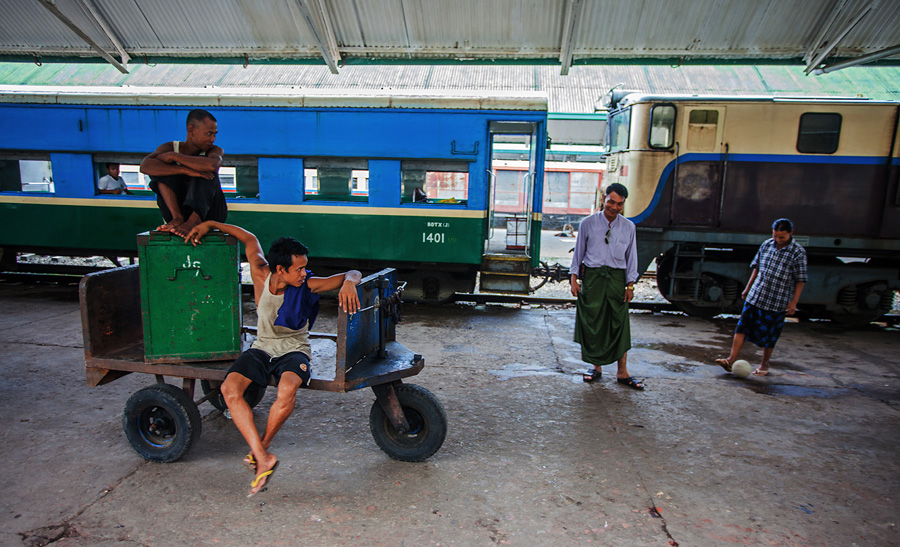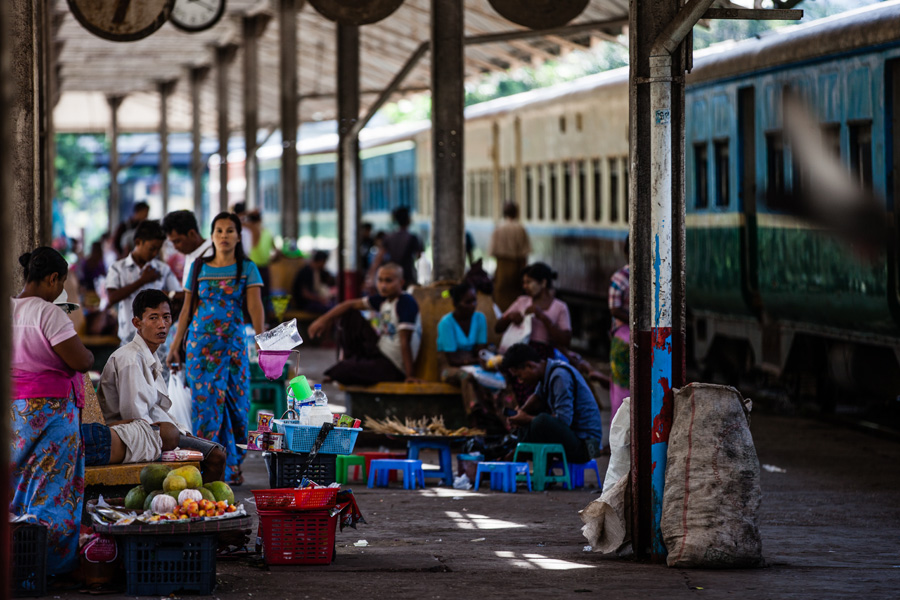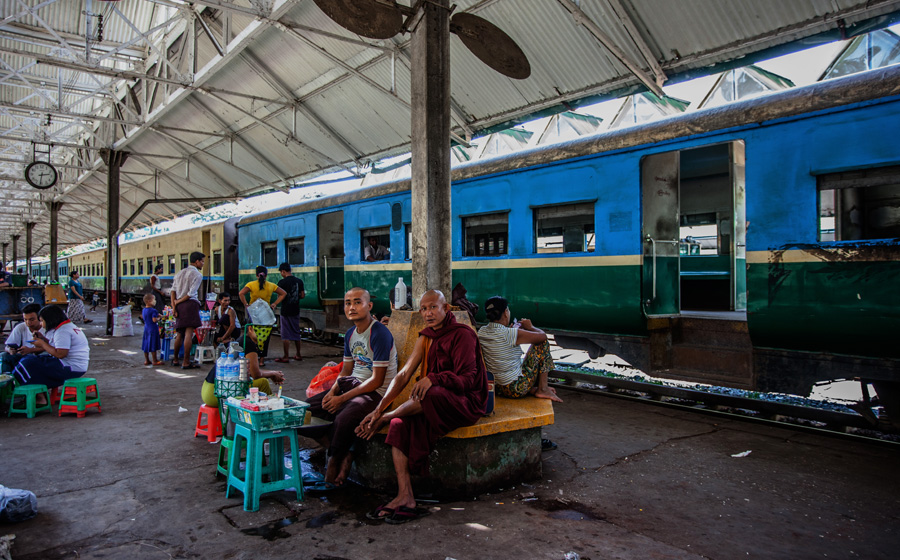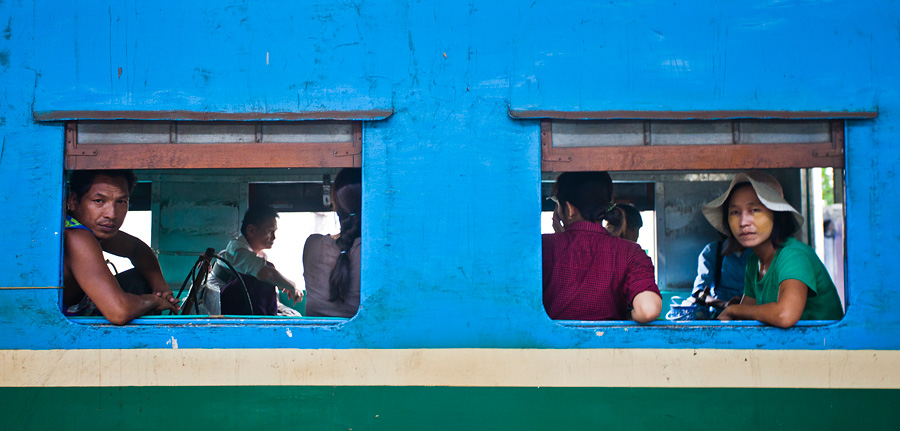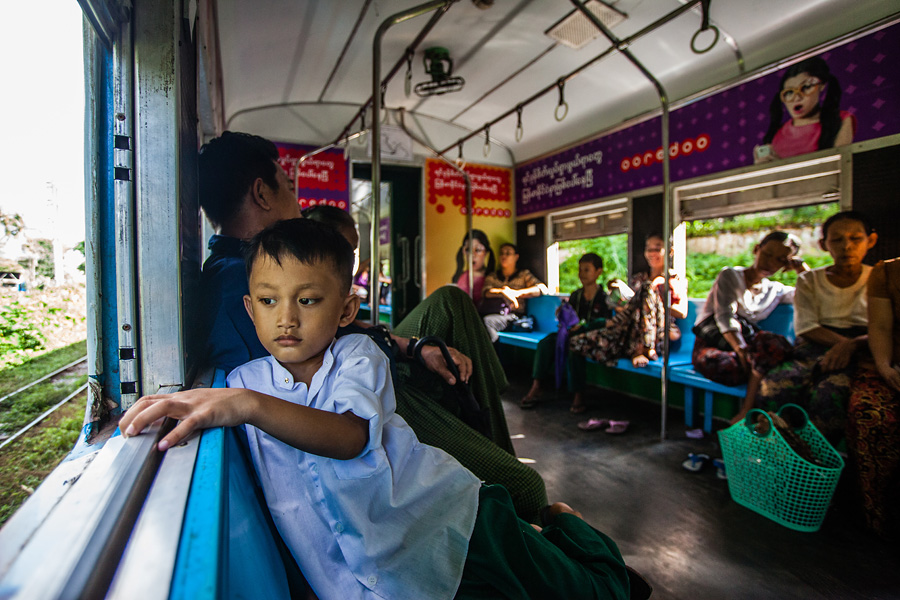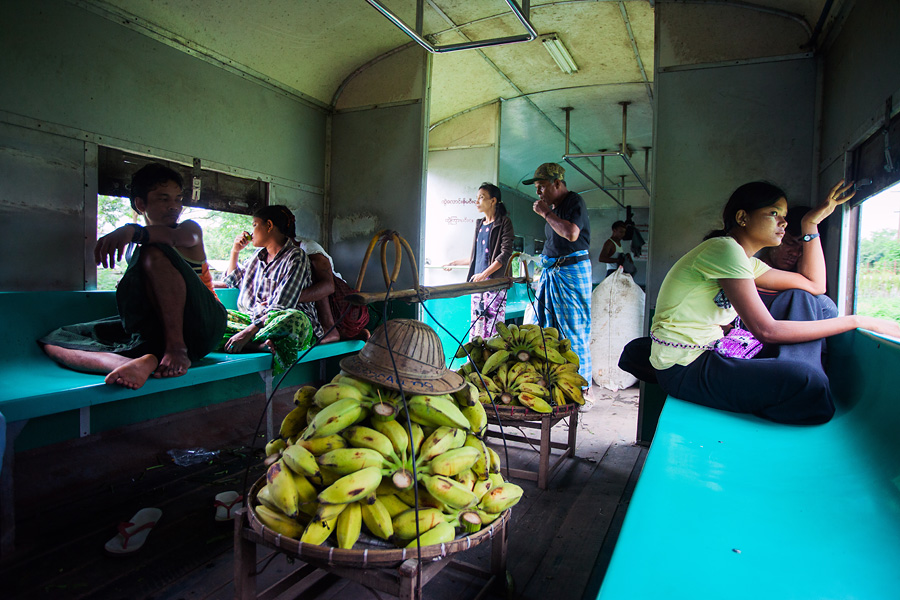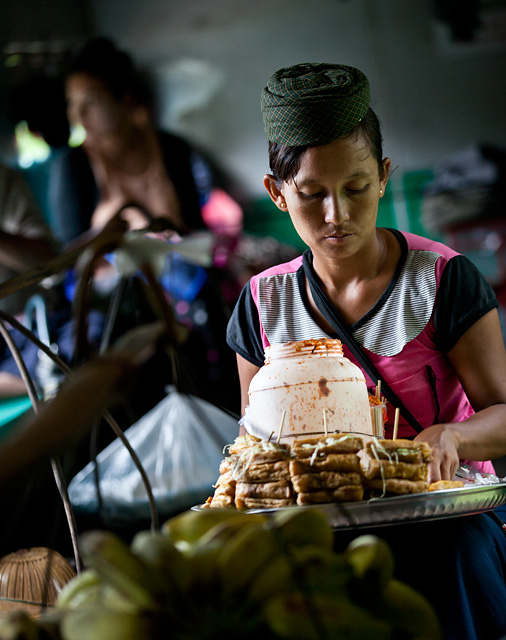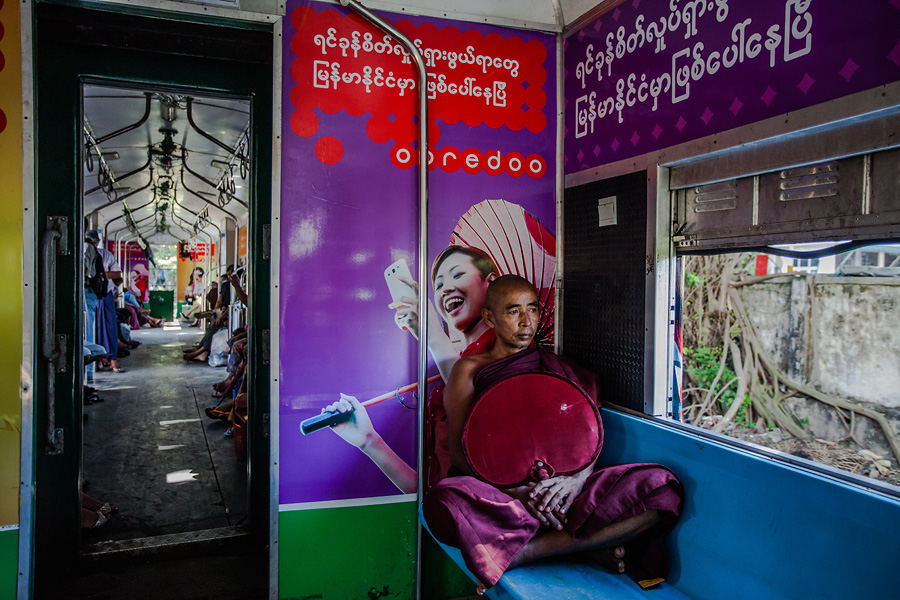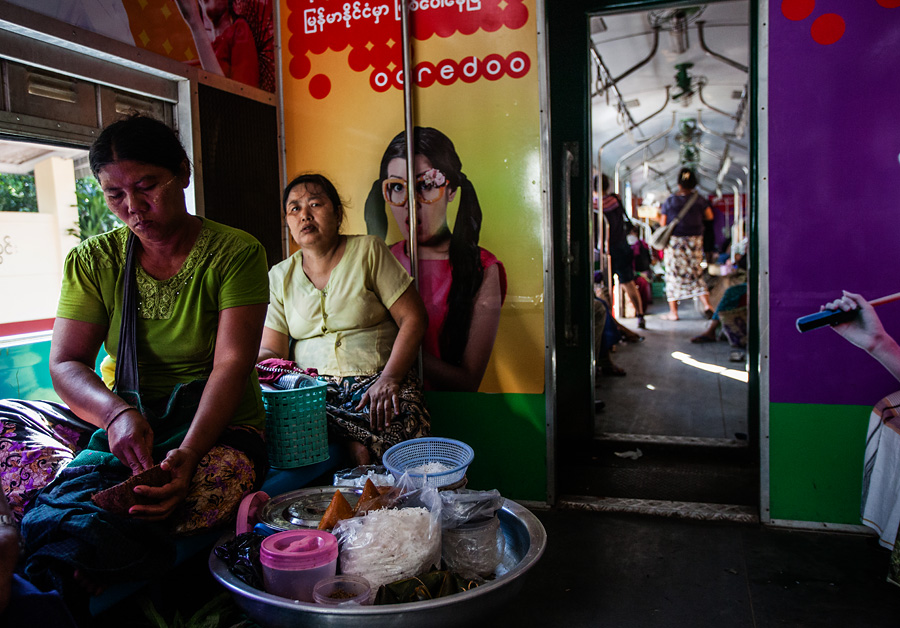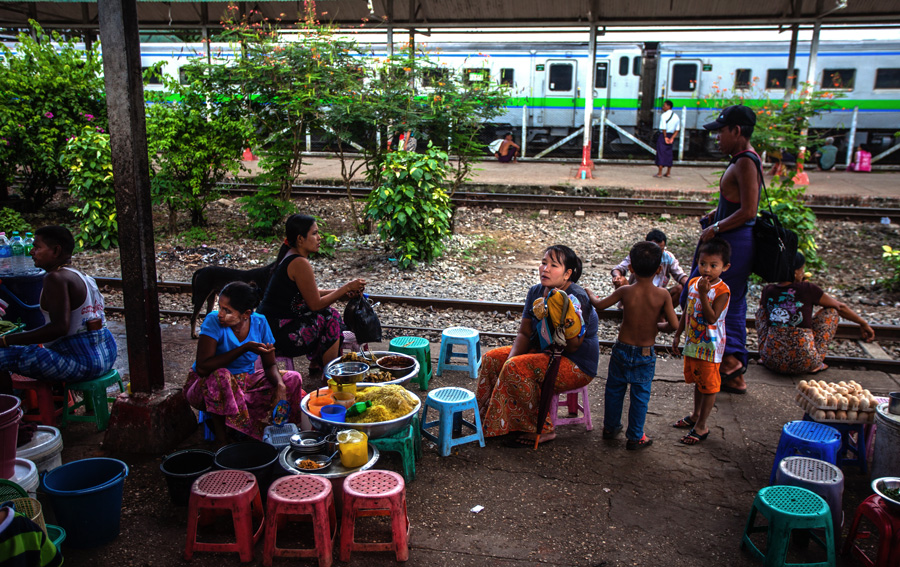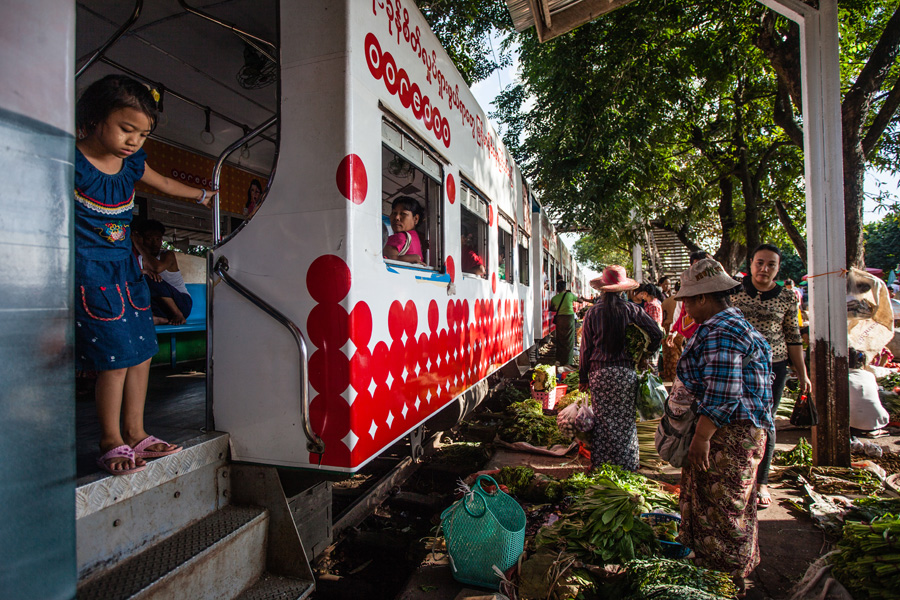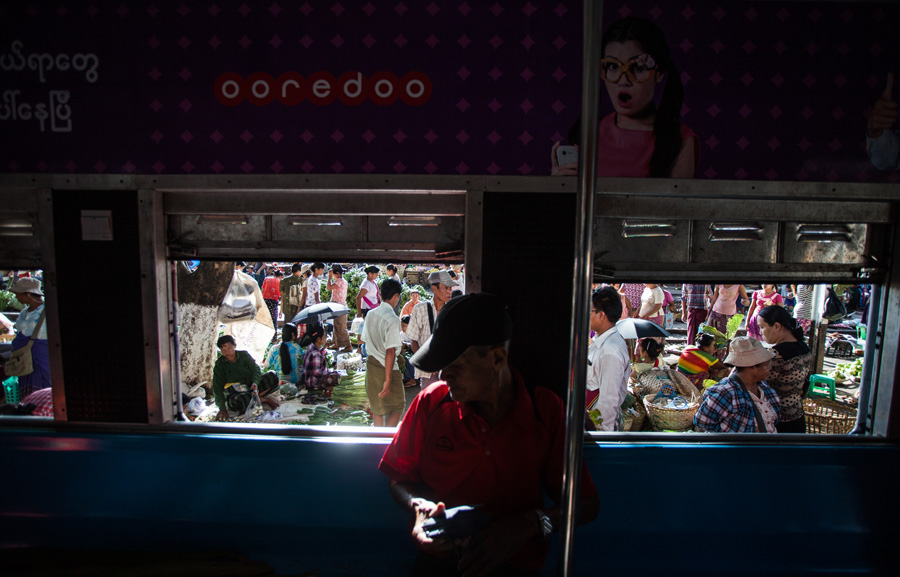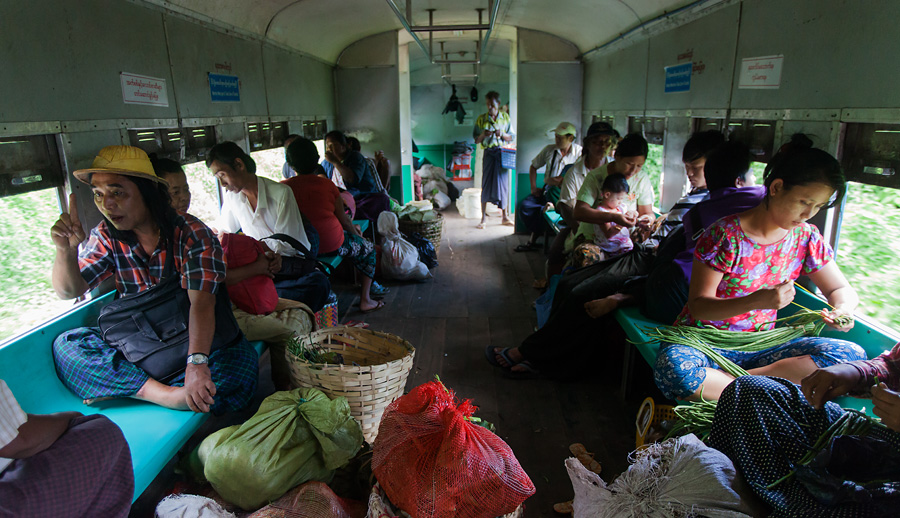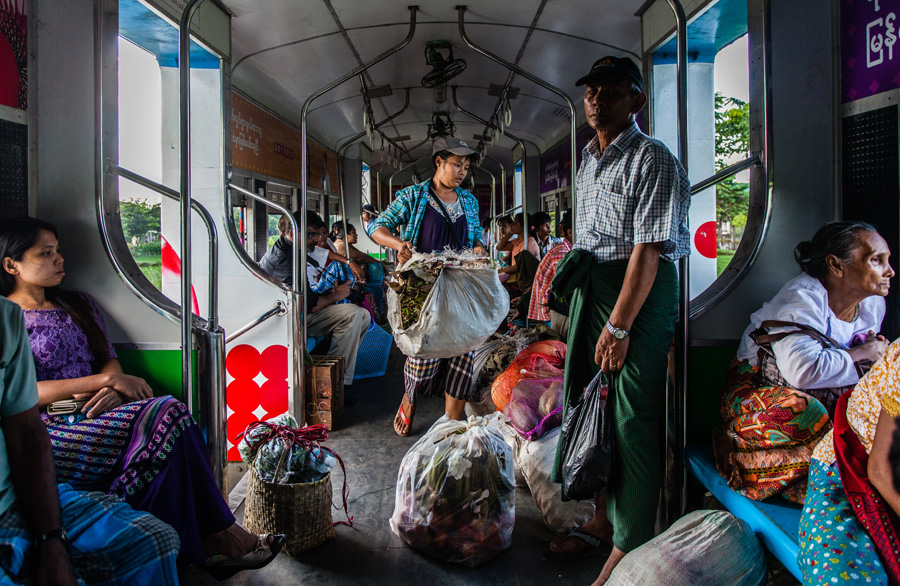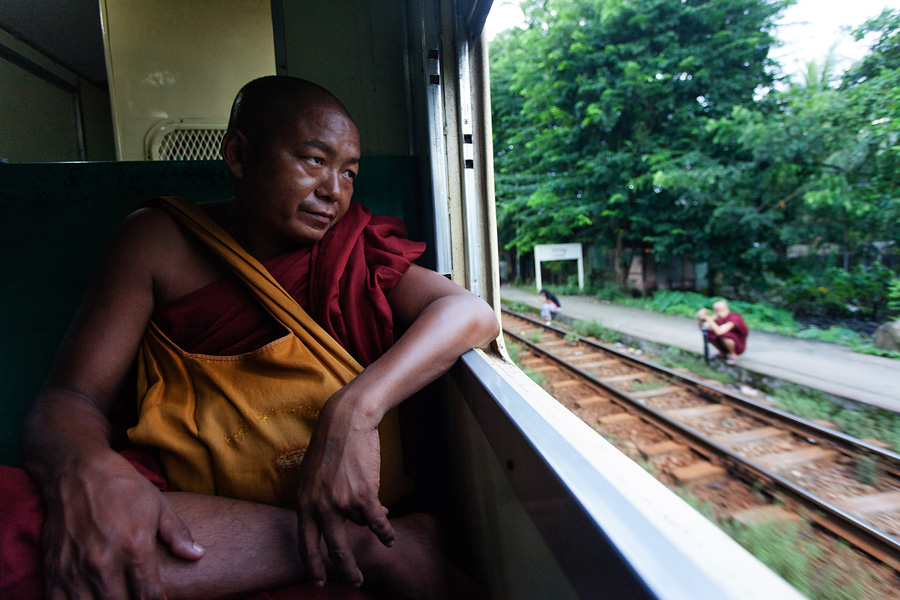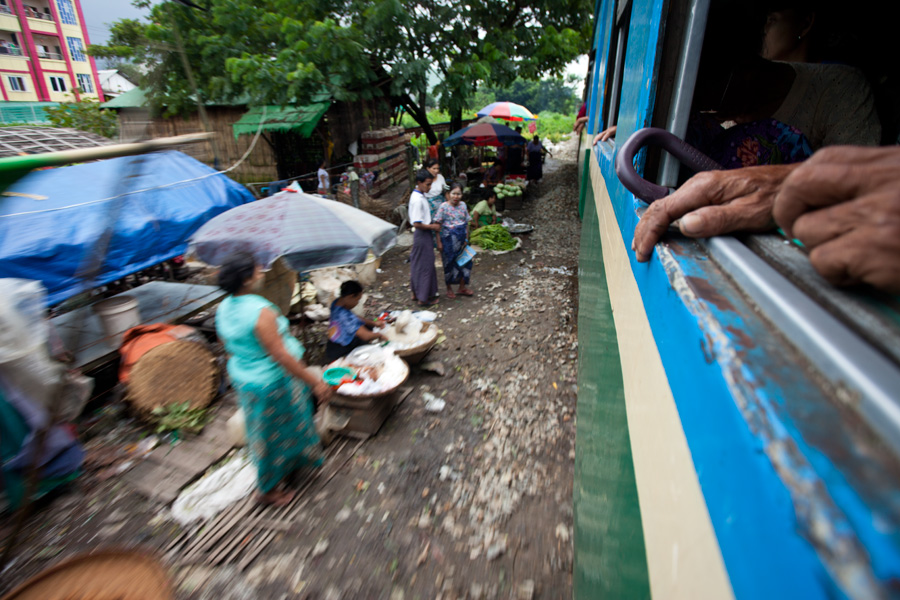Images: Yangon Circular Train
Also see: Our photography tour to Myanmar
Yangon’s circular train serves local commuters by connecting the city with its surroundings. The passengers on board are usually workers who travel to the city from their homes in the suburbs or traders who sell farm produce in the markets. Much of Myanmar’s railway system is fairly old and the age shows in the coaches and the tracks. Until last year, the coaches with bench-style seating were very dated, but some of them are now replaced by new carriages. The atmosphere inside, however hasn’t changed much, making the ride still worth it.
The stations inside the city see urban population commuting on work, which slowly gets replaced by vegetable traders from the villages as the train approaches suburban wholesale markets. Occasional non-homo-sapience passengers are known to hop on board, mostly the harmless white winged variety rendered even less harmless by tying their legs. Other vendors walk in and out, often selling beetle nut leaves, quail eggs and cut fruits. The insides of the train gain a lot of colour in the suburbs, especially at a busy market that is so crowded that even the train tracks are occupied by sellers, briefly emptied for the passing train.
Apparently they now have air-con trains targeted at tourists, but taking one of those defeats the purpose of being there.
Here is a collection of images from Yangon’s Circular Train.
Trains begin and end at Yangon Central station, although strictly speaking, being a circular train there is no beginning and end. The train stops only a few minutes at Yangon Central before continuing to make another circle. In other stations, it stops barely long enough for the passengers to quickly alight and board.
Yangon Central, needless to say, is the largest station on the route. Inter-city trains also begin or end the journey here. Yet, it is not a very busy place and there is an air of casualness. But that may not be the case during the morning peak hours.
Porters await travellers at Yangon Central station, while a small game of football unfolds nearby.
Yangon Central station at its busiest in the afternoon hours. Food vendors constitute a good percentage of occupants of the platform at any given time.
Yangon Central station.
Commuters lookout from one of the trains stationed in Yangon Central.
The seating inside has long benches facing each other, typical of any commuter train. Unlike trains in metros in any part of the world, the circular train is not crowded for most part of its journey (at least in the afternoon hours when I made my trips) and it is not difficult to find a place to sit.
Some stations along the way host wholesale markets, where people come to sell there produce – mostly vegetables. The train serves to carry the goods into and out of the markets.
A food vendor in the train. They often board the train at one of the stations and alight a few stations later.
The newer coaches, introduced this year have a more metallic feel to them. Flashy advertisements replace the duotone interiors of the older trains. But the colours added by the people inside the train remain the same.
A food vendor on the train.
A station on the way, where more food awaits your arrival.
A station that doubles up as a wholesale market.
Another market. Real estate is very precious here. The train tracks are also used by the vendors, and are briefly vacated as the train arrives.
The market, inside out.
The train gets busier after passing through market stations.
A lady works to unload her acquisitions from the market in the short time that the train stops at her station.
Some trains have two classes – an expensive class that has 2+2 row seating with alternate rows facing each other. These coaches tend to be sparsely occupied compared to the regular coach with long benches.
The journey goes on, just as the life goes on outside the coach.
Yangon Circular Train – Information
For travellers staying in the city, Yangon Central is the most convenient station to hop on to the train. A full circle takes about three hours. Some travellers tend to get off half-way and take a taxi ride back to their base. If you prefer to do that, ensure that you stay on at least until a market stop to experience the vibrant nature of the train.
A wikipedia page for the Yangon circular train has the schedule, but the timings may have changed. Always double-check before you plan your schedule.
Tickets were once priced at US$1 for foreigners, but with the way things are changing in express-train speed in Myanmar, this has changed too. Everyone pays the same price now, and the full circle will cost you only K100 or K200 (approx US$0.1 to 0.2) depending on your travel class. There are only two-classes – one that has long benches and one with row seating. You are normally given the K200 ticket, but sit in the bench seating coaches for the best experience. Tickets are purchased on the platform, and train usually begins from platform number 7. They now have an air-con train as well, but taking one defeats the whole purpose of being there.
